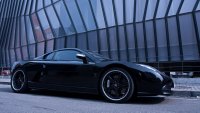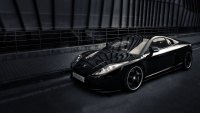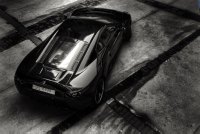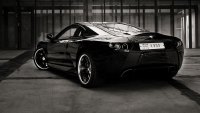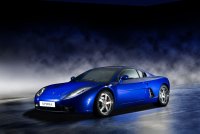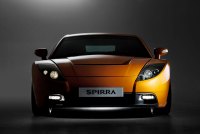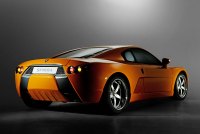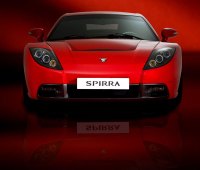Mercedes-Benz SLS AMG
Tags:
AMG,
Carros,
Mercedes-Benz
Publicado: sexta-feira, 25 de junho de 2010 às 07:02
Permalink:
Copiar
Link copiado para a área de transferência!
Houve um erro ao copiar o link para a área de transferência.
Pista di Fiorano - Ferrari F10 - Fernando Alonso - Onboard
Publicado: quinta-feira, 24 de junho de 2010 às 17:38
Permalink:
Copiar
Link copiado para a área de transferência!
Houve um erro ao copiar o link para a área de transferência.
Ford Fiesta gets 40 highway miles per gallon. That's more than 21 hybrids. Seriously.
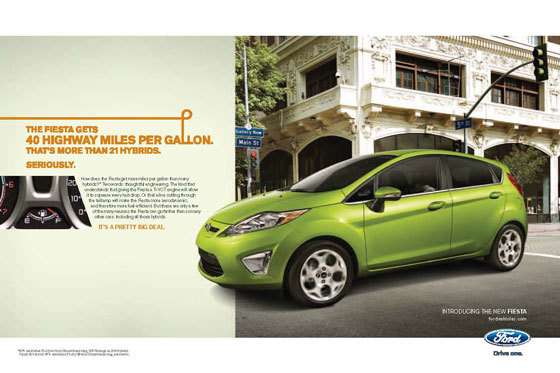
Tags:
Carros,
Ford,
Propagandas de Carros,
Publicidade
Publicado: quinta-feira, 24 de junho de 2010 às 12:51
Permalink:
Copiar
Link copiado para a área de transferência!
Houve um erro ao copiar o link para a área de transferência.
Polar. Trato é trato.
Publicado: quinta-feira, 24 de junho de 2010 às 07:17
Permalink:
Copiar
Link copiado para a área de transferência!
Houve um erro ao copiar o link para a área de transferência.
Oullim Spirra
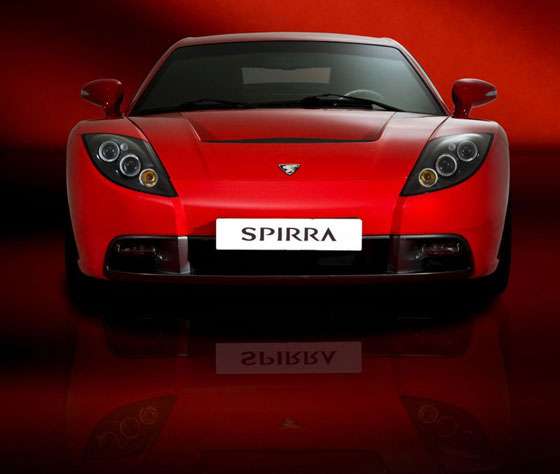
Nove anos depois da apresentação, fabricante coreano Oullim anuncia a produção do esportivo Spirra, com quatro opções de motor e linhas inspiradas nos carros da marca do cavalinho rampante.
A primeira apresentação do Spirra ocorreu em 2001. Na época, o esportivo, que era fruto de um projeto da Proto Motors, tinha o nome de PS-II. O modelo foi apresentado novamente em 2005 e, em 2007, a empresa Proto Motors foi adquirida pela Oullim Motors, que resolveu incrementar e desenvolver o conceito a uma versão final de produção. Esta semana, o fabricante coreano anunciou que vai produzir artesanalmente 100 unidades do Spirra, que chegam ao mercado interno até o fim do ano, pelo preço de 100 mil dólares. A intenção é fabricar 300 no ano que vem.
Quem olha o esportivo coreano pela primeira vez pode jurar que suas linhas foram criadas por um estúdio italiano. Mas o design é mesmo coreano, de Seoul. Com o objetivo de reduzir o peso total, que ficou em apenas 1.077 Kg, e aumentar a resistência, o Spirra tem chassi feito em fibra de carbono, com uma moldura interna tubular e mede 4,35m de comprimento, 1.92m de largura, 1,21m de altura e 2,65m de entre-eixos. A suspensão é independente, com braços duplos na dianteira e traseira. As rodas de liga leve de cinco raios são de 18 polegadas e calçadas com pneus 235/40 ZR18 na frente e 275/40 ZR18 atrás. Os freios tem seis pistões no disco dianteiro e quatro no traseiro.
O acabamento interno tem a predominância das cores cinza e preto, separadas por um filete vermelho, que também está presente no centro do volante e na decoração do tapete. Os ocupantes são protegidos por cintos de quatro pontos. No console central, o esportivo tem um sofisticado sistema de computador de bordo, com tela sensível ao toque, desenvolvido pela empresa coreana IT Eletronics, que também pertence ao Grupo Oullim.
Sob o capô dianteiro, o esportivo tem um motor Hyundai V6 2.7, que poderá ter quatro configurações, desenvolvendo potências de 173, 325 e 414 CV, turboalimentado, ou 493 CV, bitubinado. A transmissão de seis velocidades poderá ser manual ou automática sequencial. A versão mais potente, com câmbio manual, acelera de zero a 100 Km/h em 3,5 segundos e chega à velocidade máxima de 310 Km/h. A Oullim quer desenvolver opções bem mais apimentadas, com motores que chegam aos 600 CV de potência, que devem chegar ao mercado em 2012.
Publicado: quarta-feira, 23 de junho de 2010 às 17:45
Permalink:
Copiar
Link copiado para a área de transferência!
Houve um erro ao copiar o link para a área de transferência.
Ford Focus RS Le Mans Classic
A Ford vai lançar cinco versões especiais do Focus RS para celebrar as vitórias da montadora norte-americana nas 24 Horas de Le Mans, a prova de resistência mais tradicional do esporte a motor.
Os modelos serão exclusivos, já que a Ford vai fabricar apenas uma unidade de cada versão. Cada um dos veículos possui uma pintura exclusiva, que remete a momentos distintos vividos pela montadora entre as décadas de 1960 e 1970.
Entre os veículos, a Ford oferece um Focus pintado de preto com faixas cinzas, em homenagem à vitória de 1966, uma unidade pintada de vermelho com faixas brancas, em alusão ao trunfo de 1967, e um veículo na combinação azul e laranja, homenageando as duas vitórias de 1968 e 1969.
O quarto carro foi tingido de branco e azul para simular a pintura do Ford Capri RS 2600, vencedor de 1972, enquanto que a quinta unidade é um modelo pintado de branco com detalhes em azul e vermelho, fazendo uma homenagem ao Ford MK IIB, que disputou a prova em 1967.
Cada um dos veículos é equipado com quatro bancos Recaro revestidos de couro e alcântara, com cores que combinam com a pintura da carroceria. As combinações também aparecem em detalhes, como as manoplas do câmbio, do freio de mão e o apoio de braço central.
Os cinco modelos serão vendidos após a realização da Le Mans Classic, que acontecerá entre os dias 9 e 11 de julho. Todas as unidades contarão ainda com um cronômetro e painel desenhados exclusivamente para as versões.
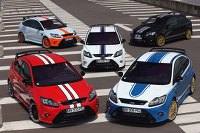
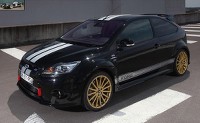
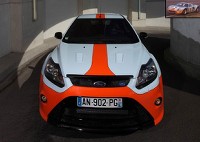
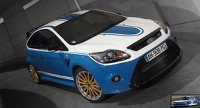
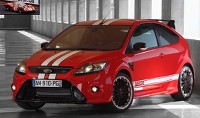


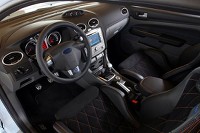
FORD FOCUS RS LE MANS CLASSIC: A COLLECTION OF 5 UNIQUE EXAMPLES CREATED TO PAY TRIBUTE TO LEGENDARY FORD LE MANS RACERS
Saint-Germain-en-Laye, 21 June 2010 - Ecurie Ford France, one of the partners of the popular
Le Mans Classic event which takes place between July 9th and 11th, has prepared a collection of just five Focus RS cars in unique colour schemes, each paying tribute to the Ford cars which made
'blue oval' history at the Le Mans 24 Hours.
Each of the five Focus RS Le Mans Classic vehicles will be finished in the colours of one of the Ford cars which made 24 Hours history for Ford. During the event itself, they will even carry the race number of the cars to which they're paying tribute:
* Black with silver stripes: a reference to the Ford Mk II, which was victorious in 1966.
* Red with white stripes: recalling the Mk IV which won in 1967.
* White with a thin blue centre stripe surrounded by a red border: echoing the decoration of the beautiful Ford Mk IIB, entered by Ford France in the 1967 Le Mans 24-hours.
* Two-tone sky blue and orange: A modern take on the GT40s which dominated Le Mans in 1968 and 1969.
* Two-tone white and blue: representing the livery of the Capri RS 2600 which took the Touring category in 1972.
All five exclusive Focus RS vehicles also have customised interiors. The Recaro seats are upholstered in leather and diamond-quilted alcantara, front and back, with stitching that matches the bodywork. The gearshift gaiter, hand brake handle and central arm-rest are upholstered in real leather, and a leather safety belt guide has been added to the front seats.
Each of the five cars will carry a personalised numbered plaque on the dashboard confirming its exclusivity as part of the collection.
The five cars will be seen in action at the 2010 Le Mans Classic in July, and will be driven on a number of laps of the full track at the start of a number of the different 'grid' races reserved for cars of a particular era, with Ford-invited special guests and VIPs at the wheel.
The Focus RS Le Mans Classic units will be joined on the track by the limited edition Ford Focus RS500, whose futuristic matt black livery will be an equally eye-catching addition to the palette of colours which have fired the imaginations of countless fans of Ford and the greatest endurance race in the world.
Only Five For Sale
Once the fifth Le Mans Classic event is over, these five unique Focus RS Le Mans Classic vehicles will be put up for sale, and will be offered with exclusive accessories. Fitted with either RS(1) or RS Technology(2) packs, they will be supplied with a Le Mans Classic watch - a 3-dial automatic chronograph with large date display and sapphire background of which only 600 are to be produced.
The 5 cars to which the Ford Focus RS Le Mans Classic is paying tribute:
The Ford Mk II (victorious in 1966): on the 18th of June 1966, Henry Ford II himself gave the starting signal for the 24th Le Mans 24 Hours. He let loose a pack of fifty-five vehicles led out by two of the eight Mk IIs entered by the manufacturer plus six GT40s, including one belonging to Ford France which was driven by Guy Ligier and the American Bob Grossman. The duel with Ferrari was at its peak for this "race of the century". Unbeaten since 1960, the Italian marque was the queen of Le Mans. However, this time it was the Americans who dominated, pulling off a spectacular triple! For the first time ever, the 200km/h average speed barrier was broken at
Le Mans.
The Ford Mk IV (winner in 1967): Wanting revenge, Ferrari sent its formidable 330 P4s to challenge the Mk IVs in a face-to-face battle without mercy. However, it was all in vain. The unstoppable red, white-trimmed Mk IV, piloted by Dan Gurney and A.J. Foyt, wiped the floor with Lodovico Scarfiotti and Mike Parkes' P4. Unforgettable new pages in the history of motor sport were being written before everyone's eyes. The epic tale of the Mk IIs and Mk IVs concluded with the spectacular distance (5,232.9 km) and average speed (218 km/h!) records set by Ford that year.
The Ford GT40 (victorious in 1968 and 1969): Even though Ford as a manufacturer was not directly involved, John Wyer's JWA team benefitted from Gulf Oil sponsorship and the blessing of Ford Dearborn. For their first outing in 1968, the GT40s faced some keen and challenging competition from Porsche and Alfa Romeo. Driven by Pedro Rodriguez and Lucien Bianchi, the GT40 clearly dominated the field ahead of a Porsche 907 and three Alfa Romeo 33/2s. This third consecutive Ford victory was the first for a genuine GT40.
In 1969, competition was as intense and varied as ever: Porsche was in attendance with its 908s and its new 917s, Matra introduced its 630/650s and Ferrari was back again with its 312 Ps. Nevertheless, once again the GT40 beat them all, sweeping the boards at the end of an epic duel. Jacky Ickx raced across the finish line leaving the German Hans Hermann 120 metres behind and red faced at the wheel of his Porsche. The GT40 drove away with Ford's fourth consecutive victory at Le Mans!
Capri RS 2600 (1st in the Special Touring category in 1972): Tenth overall, the Capri RS 2600, driven by Gerry Birrel and Claude Bourgoignie, dominated its category during the 1972 Le Mans 24 Hours. Manufactured between 1969 and 1986, the Ford Capri enjoyed a great sporting career and was one of the great leaders of the European Touring Car Championships and the 24 Hours of Spa-Francorchamps. It also shone in the Production Cars Championship of France and the famous British Touring Car Championship. Many Formula 1 drivers distinguished themselves at the wheel of a Capri, including Jochen Mass, Hans Stuck and the Tyrrell Racing duo of Jackie Stewart and François Cevert during the 6 Hours of Paul Ricard Circuit organised in 1972. The rally version of the Capri also appeared in the colours of Ecurie Ford France with internationally renowned drivers such as Jean-François Piot, Guy Chasseuil, Jean Vinatier and Jean-Claude Gamet at the wheel.
Ford Mk II Ecurie Ford France (1967): Jo Schlesser teamed up with his friend Guy Ligier on only one occasion at Le Mans. That was in 1967, in a magnificent white Ford Mk II powered by a seven litre V8 engine. An early track exit crushed their hopes in the 13th hour. However, driving the same car, they won the last ever 12 Hours of Reims, the other former great French endurance race. Jo Schlesser, a driver with an incredibly eclectic talent, was killed during the 1968 French Grand Prix. He was one of Ecurie Ford France's most emblematic drivers, racing on track circuits, in rallies and in a famous hill climbing race of the time, the Mont-Ventoux.
Publicado: quarta-feira, 23 de junho de 2010 às 12:45
Permalink:
Copiar
Link copiado para a área de transferência!
Houve um erro ao copiar o link para a área de transferência.
Assinar:
Postagens (Atom)

